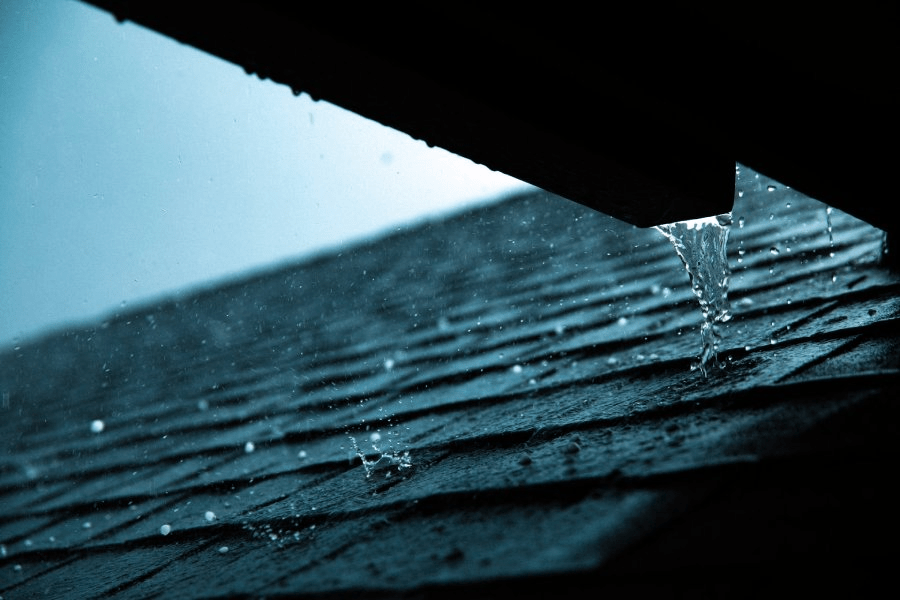When embarking on a roofing project, one important consideration is the impact of weather, particularly rain, on the roof before installing shingles. Rain on roof before shingles can influence both the installation process and the overall effectiveness of the roofing system. In this guide, we’ll explore how rain affects roofing projects, what precautions to take, and how to ensure a successful installation despite weather challenges.

Understanding the Impact of Rain on Roofing
Rain is an inevitable part of many roofing projects, but its presence can pose challenges if not properly managed. Here’s a detailed look at how rain interacts with roofing tasks and what it means for your project:
Effects of Rain on Roof Decking
Before shingles are installed, the roof decking is exposed to the elements. This decking, typically made from plywood or oriented strand board (OSB), can absorb moisture from rain. Excessive moisture can lead to:
- Swelling and Warping: Wood decking may swell or warp when exposed to rain. This can create an uneven surface for shingles, potentially leading to installation issues and compromised roof performance.
- Delamination: OSB and plywood can experience delamination, where the layers of the board separate due to moisture. This can weaken the structural integrity of the roof deck.
- Mold and Mildew: Prolonged exposure to moisture can foster mold and mildew growth on the decking, which can compromise the health of your home and the durability of the roofing materials.
Read too: Decoding Timelines: How Long Does It Take To Replace A Roof and What to Expect
Impact on Shingle Adhesion
Shingles, especially asphalt ones, rely on proper adhesion to the roof deck for optimal performance. Rain can affect this process in several ways:
- Reduced Adhesion: Wet or damp surfaces can reduce the effectiveness of the adhesive strips on asphalt shingles. This can result in poor bonding, leading to potential issues like lifting or curling of shingles.
- Improper Sealing: Shingles need to seal properly to protect against leaks. Rain can interfere with this sealing process, causing gaps and vulnerabilities in the roofing system.
Best Practices for Handling Rain During Roofing Projects
To mitigate the effects of rain on your roofing project, follow these best practices:
1. Check the Weather Forecast
Before starting a roofing project, monitor the weather forecast closely. Plan your installation for a period of dry weather to minimize the risk of rain affecting the process. If rain is expected, consider delaying the project to avoid complications.
2. Protect the Roof Deck
If rain is unavoidable, take steps to protect the roof deck:
- Cover the Deck: Use a heavy-duty tarp or roofing felt to cover the exposed decking. This temporary cover can shield the decking from rain and prevent excessive moisture absorption.
- Install Temporary Roofing: For larger projects, consider installing temporary roofing materials, such as synthetic underlayment, to protect the deck until shingles can be installed.
3. Ensure Proper Drainage
Ensure that the roof is designed to handle water runoff efficiently. Proper drainage helps prevent water from pooling on the deck and reduces the risk of moisture-related issues. Check that gutters and downspouts are functioning correctly and clear of debris.
4. Allow for Drying Time
If the roof deck does get wet, allow it sufficient time to dry before proceeding with shingle installation. Ensure that the surface is completely dry to ensure proper adhesion of the shingles.
5. Use Quality Materials
Invest in high-quality roofing materials that are designed to withstand varying weather conditions. Materials with better moisture resistance will perform better when exposed to rain and other environmental factors.
Addressing Common Issues Caused by Rain
If rain has already impacted your roofing project, addressing the issues promptly is crucial:
1. Inspect the Roof Deck
After a period of rain, inspect the roof deck for any signs of damage, such as warping, swelling, or mold growth. Address any issues immediately to prevent further complications.
2. Replace Damaged Decking
If the decking has sustained significant damage, replace it before installing shingles. Ensure that the new decking is properly treated and dry before proceeding with installation.
3. Check Shingle Condition
Inspect the shingles for any signs of damage or compromised adhesion. Replace any damaged shingles and ensure that the remaining shingles are properly sealed.
Professional Roofing Considerations
If you’re unsure about handling rain on your roof before shingles are installed, consider consulting a professional roofer. Experienced roofers can provide valuable insights and ensure that your roofing project is completed to a high standard, regardless of weather conditions.
Hiring a Professional Roofer
When hiring a professional, ensure that they have experience dealing with adverse weather conditions. Ask about their procedures for handling rain and other challenges during the roofing process.
Conclusion
Understanding and managing rain on roof before shingles is essential for a successful roofing project. By taking the necessary precautions, protecting the roof deck, and addressing any issues promptly, you can ensure that your roofing system performs effectively and provides long-lasting protection for your home. Whether you’re handling the project yourself or working with a professional, being prepared for weather challenges will help you achieve the best results.



Leave a Reply